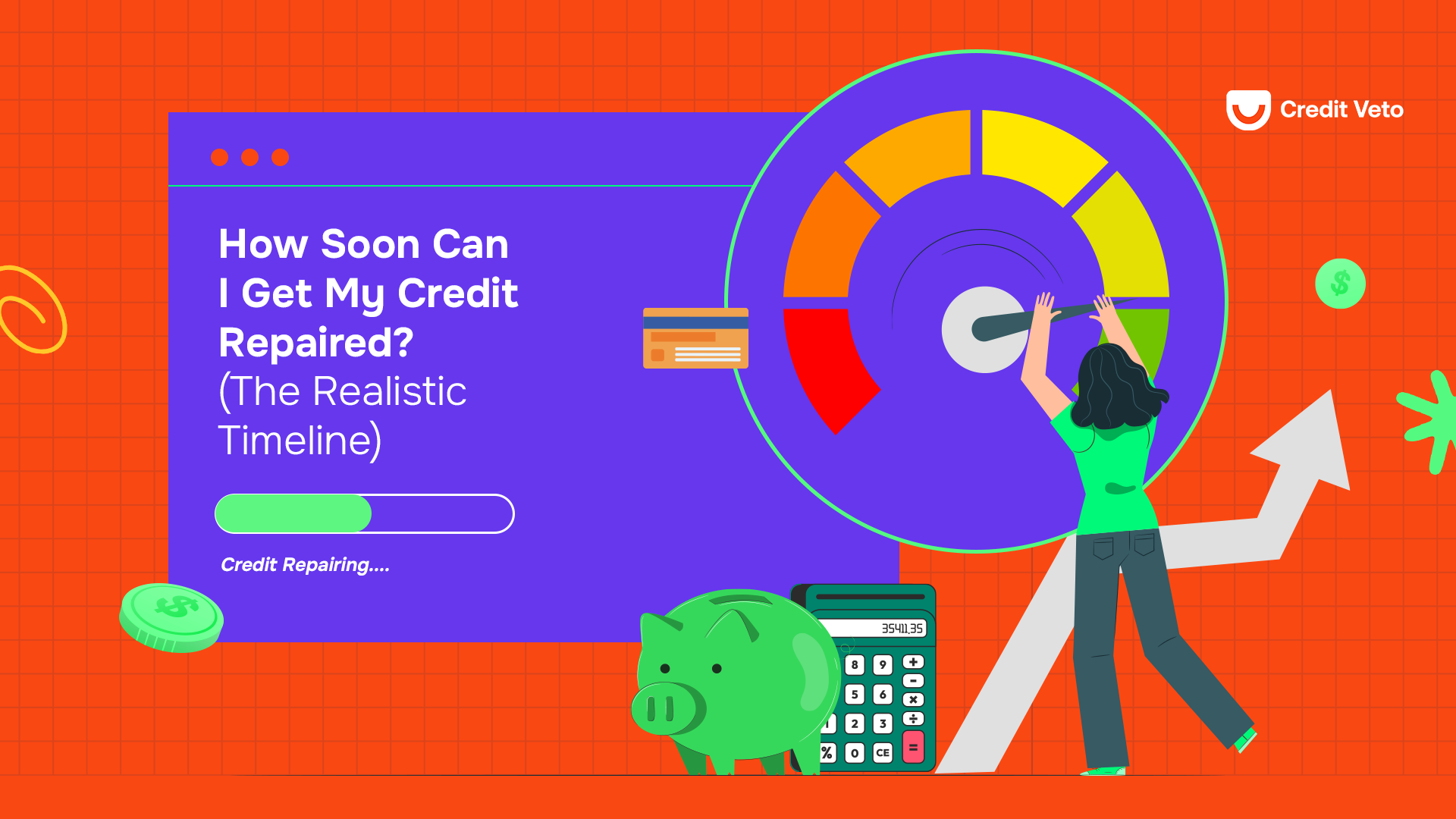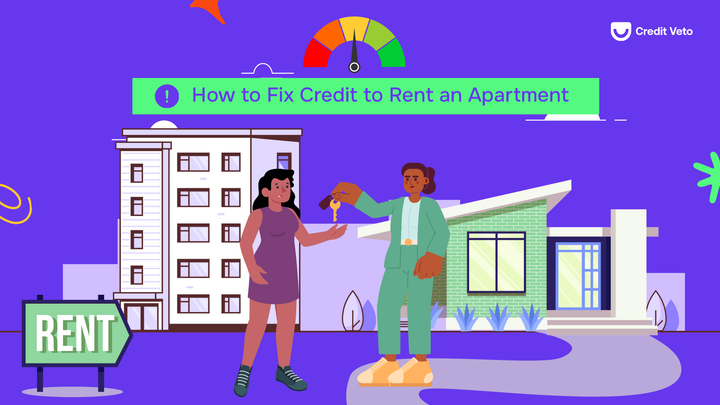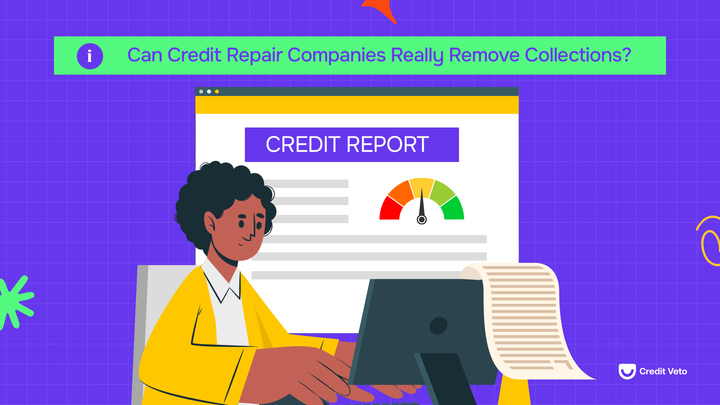How Soon Can I Get My Credit Repaired? (The Realistic Timeline)
Fixing your credit doesn't happen overnight, but with the right steps, you can start seeing improvements in as little as a few months. Discover the realistic timeline for credit repair, what factors affect it, and how to speed up the process. Get your credit on track today!

If you’re seriously working on repairing or rebuilding your credit score, you must have found yourself asking this pivotal question: "How soon can I get my credit repaired?" The good news is that it is possible to start seeing some improvements in as little as a few months, but the ultimate credit repair process depends on several factors, such as the severity of the issues on your credit report and how actively you work on your credit repair strategy.
According to a study by FICO, approximately 20% of U.S. consumers have a credit score of 599 or lower, which often limits their access to loans, mortgages, or other financial opportunities. The reality is that while you can start seeing improvements within a few months, repairing your credit fully is a long-term process that requires patience and consistent effort. According to the Consumer Financial Protection Bureau (CFPB), resolving errors on your credit report can take anywhere from 30 days to 6 months on average, depending on the complexity of the issues.
Whether you're trying to qualify for a mortgage, buy a car, or simply improve your credit for financial freedom, the process of repairing your credit can vary depending on several factors.
In this post, we’ll cover what to expect during the credit repair process, the realistic timeline, factors that influence it, and how to speed up the process with the right steps. Continue reading to find answers to all your questions.
Factors That Affect the Speed of Credit Repair
Before diving deep into the credit repair timeline, it's important to understand the variables that affect how quickly your credit can be repaired. The timeline for credit repair can vary widely from person to person. The following factors will play a role in how soon you can see results.
1. Type of Negative Items on Your Credit Report
The types of negative marks on your credit report play a significant role in how long it will take to repair your credit.
- Late Payments: If you're dealing with a late payment, it can remain on your credit report for up to 7 years. However, if you’ve missed a few payments but are otherwise current, repairing your credit can happen faster by staying current on new payments and disputing inaccurate entries.
- Collections: If you have accounts in collections, the situation may take longer to resolve, depending on whether the collections are accurate or not. Collection accounts can stay on your credit report for 7 years as well.
- Bankruptcies: A Chapter 7 bankruptcy can stay on your report for up to 10 years, and a Chapter 13 stays for 7 years. These take the longest to repair, but it is still possible to remove bankruptcy from your credit report early and improve your credit score with consistent effort.
- Inquiries: Hard inquiries may remain on your credit report for 2 years. While they don’t have as big an impact, too many inquiries in a short period can hurt your score.
2. The Severity of Your Credit Issues
The more severe your credit problems are, the longer it may take to fix them. For example:
- If you have a few late payments, your repair efforts will be quicker than someone with bankruptcies or multiple accounts in collections.
- The severity of the issues can determine the types of actions needed (e.g., disputing inaccuracies, negotiating with creditors, or utilizing professional credit repair services like Credit Veto).
3. Your Current Credit Situation
If your current credit score is already close to a good level, repairing it can take much less time. Conversely, if your credit is severely damaged, it may take more time to repair.
- Your Starting Credit Score
If your credit score is already relatively high, the repair process will be quicker than for someone starting with a very low score, usually considered a bad credit score. A low starting score (below 500) often means more negative items on your report, which can take time to fix. If your score is already in the mid-600s, repairs might be quicker.
- Your Credit Utilization Rate
Your credit utilization rate (how much credit you’re using compared to your available credit) plays a major role in your credit score. It accounts for 30% of your score, so if you're using more than 30% of your available credit, this could be significantly harming your score.
By lowering your balances and keeping utilization under 30%, you’ll start seeing improvements quickly. This process could take a few weeks to months, depending on how much you owe.
What is the Realistic Timeline for Credit Repair?
Let’s break down how long credit repair typically takes based on common credit issues and strategies.
1. The First 1–3 Months: Early Improvements
During the first 1–3 months, you’ll likely see some small improvements to your credit score. Here’s what can happen during this time:
- Disputing Inaccurate Information: If you’ve identified inaccurate negative marks on your credit report, disputing them with the credit bureaus can start to remove errors. This process can take a few weeks to 3 months. If you’re using Credit Veto or another legit credit repair service, you will start seeing errors on your report being corrected during this time frame.
- Lowering Credit Utilization: If you reduce your credit card balances and get them below 30% of the credit limit, your credit utilization rate will decrease, which could improve your score in this short period.
2. 3–6 Months: More Noticeable Results
Between 3 and 6 months, you will likely start to see more noticeable improvements. If you’ve been focusing on the following, you’ll see significant movement:
- Paying Off Debts: Paying off collections or old debts will have a positive impact on your score.
- Timely Payments: If you’ve been making timely payments on all bills, your credit report will start reflecting that, boosting your score.
- Disputing Errors: Continuing to dispute any remaining errors will help clean up your report faster.
3. 6–12 Months: Long-Term Improvements
For severe credit issues (such as bankruptcies or multiple accounts in collections), it may take 6–12 months to see substantial improvements in your credit score. The following will help during this time:
- Credit-Building Efforts: Using secured credit cards or credit-builder loans can help you create positive credit history during this period.
- Settling Collections: If you can negotiate and settle any remaining collections, this will also help your score improve during this time.
4. 1 Year and Beyond: Full Credit Restoration
It can take over 1 year to fully restore your credit, especially if you’ve been dealing with significant issues such as bankruptcy. However, once you've started making positive changes, your score will continue to improve as negative marks age off your credit report.
How to Speed Up Your Credit Repair Process
While credit repair can take time, there are steps you can take to speed up the process and see results faster:
1. Dispute Inaccurate Information
- Regularly monitor your credit report for any errors or inaccuracies. Under the FCRA (Fair Credit Reporting Act), you have the right to dispute any information that’s not accurate or outdated.
- Credit Veto offers credit monitoring services to help you dispute incorrect information effectively, making it easier and faster to clean up your credit report. Save 20% when you sign up for our yearly plan.
2. Pay Your Bills on Time
- Your payment history makes up 35% of your credit score. Ensuring that you pay all your bills on time will make the most significant difference in the shortest amount of time.
3. Keep Your Credit Utilization Low
- Credit utilization is the second most significant factor influencing your score. Keeping your credit card balances below 30% of your credit limit helps improve your score quickly.
4. Work with a Credit Repair Service
- If you don’t have the time or knowledge to dispute inaccuracies or clean up your credit report, working with a professional credit repair service like Credit Veto can help expedite the process. We will help you dispute negative items and work with you to build a healthy credit history.
Conclusion: How Soon Can You Get Your Credit Repaired?
There’s no magic number when it comes to credit repair—it depends on your situation. However, by following a disciplined approach, you can expect some initial improvements in 1-3 months and significant progress in 6-12 months. Remember, even if your credit situation seems dire, it’s never too late to start repairing your credit.
Want to speed up the process? Credit Veto is here to help with credit monitoring, expert dispute management, and tailored strategies to get your credit back on track.
FAQs: People Also Search For
Q: How long does it take to fix your credit after bankruptcy?
A: It can take 7–10 years for a bankruptcy to completely leave your credit report. However, you can start seeing improvement within 6 months if you focus on positive financial behavior.
Q: How much does credit repair cost?
A: Credit repair costs vary, but Credit Veto offers affordable flat-rate services without hidden fees. Reach out for a free consultation.
Q: Can I remove late payments from my credit report?
A: Yes! If there’s an error or if you’ve made significant improvements in your financial situation, we can help dispute inaccurate late payments.
Ready to start fixing your credit? Sign up for Credit Veto today, and let’s take control of your financial future together!




Comments ()